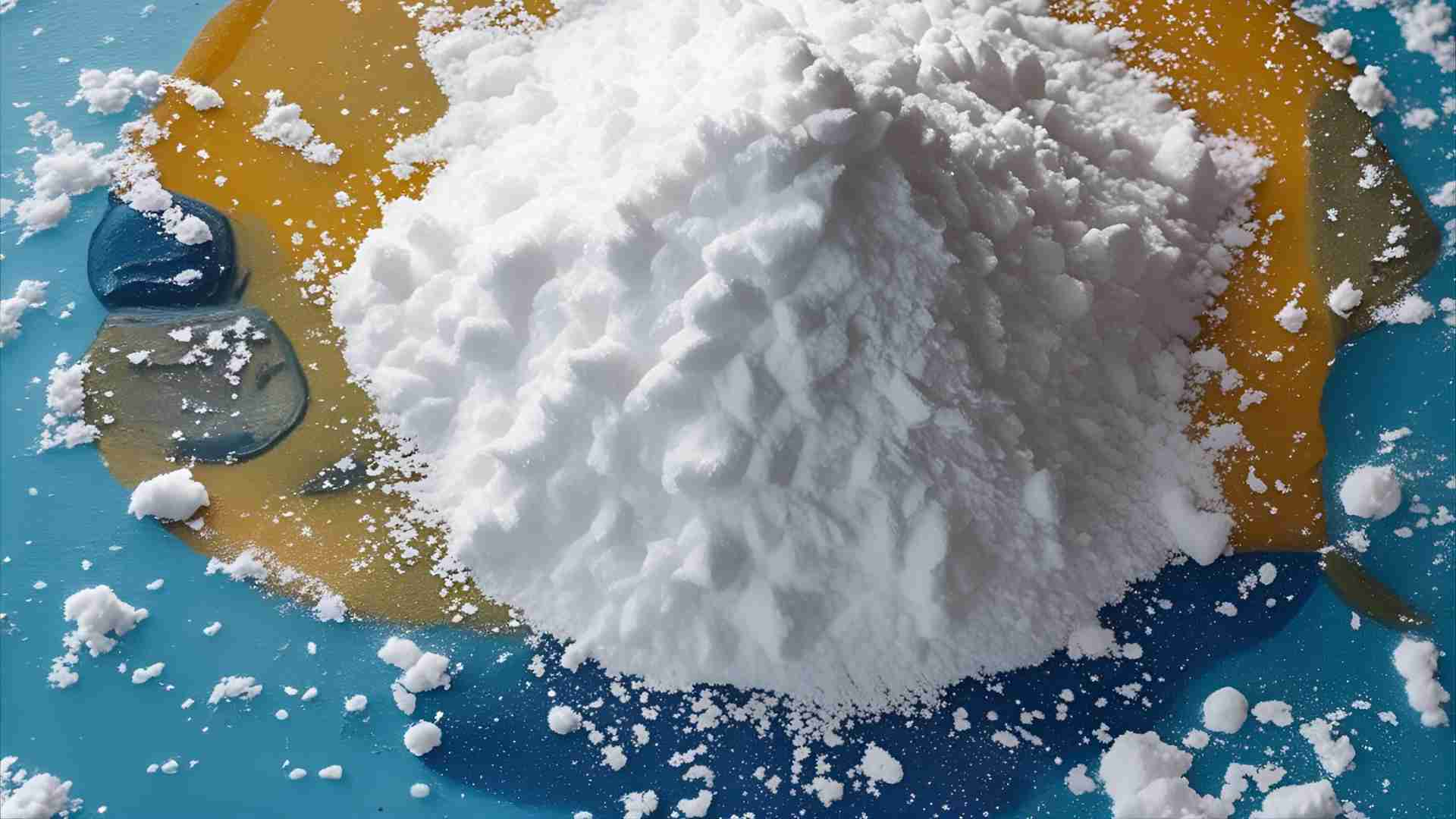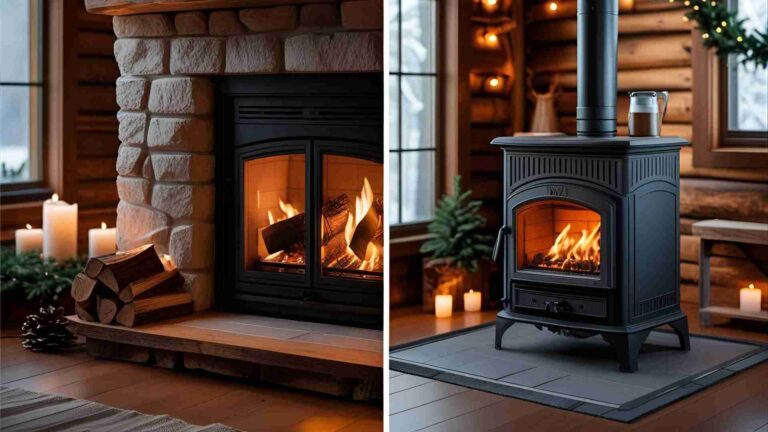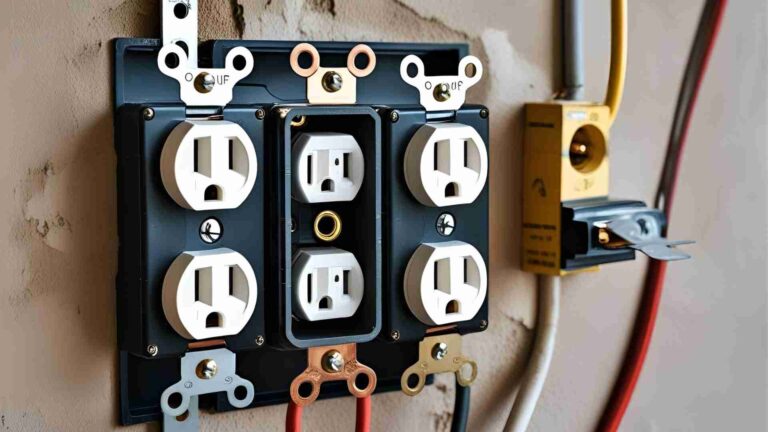How to Use Baking Soda for Pool Maintenance
Learn how to use baking soda for pool maintenance to balance pH and alkalinity, ensuring clean, safe water. Step-by-step guide with expert tips.
Maintaining a clean, clear, and safe swimming pool is a priority for pool owners, whether managing a large in-ground pool or a smaller above-ground setup like a 10′ x 30″ Intex pool. The BBB method—Bleach, Baking Soda, and Borax—offers a cost-effective, straightforward approach to pool care by leveraging household chemicals to achieve balanced water chemistry. Baking soda, in particular, plays a pivotal role in maintaining proper alkalinity and pH levels, ensuring swimmer comfort and equipment longevity. This guide explores how to use baking soda effectively for pool maintenance, addresses common pool issues, and provides practical advice for small pool owners, including those using the BBB method exclusively.
Understanding Pool Water Chemistry
Pool water chemistry revolves around balancing pH, total alkalinity (TA), and chlorine levels to keep water safe and clear. Here’s a breakdown of these key parameters:
- pH: Measures the acidity or alkalinity of the water on a scale from 1 to 14. A pH of 7.2 to 7.8 is ideal for pools, as it optimizes chlorine effectiveness and ensures swimmer comfort. Low pH (below 7.2) can cause skin and eye irritation and corrode pool equipment, while high pH (above 7.8) reduces chlorine efficacy and may lead to cloudy water or scaling.
- Total Alkalinity (TA): Acts as a buffer to stabilize pH, preventing rapid fluctuations known as “pH bounce.” The recommended TA range is 80–120 ppm (parts per million), though some sources suggest 110–150 ppm for added stability. Low TA makes pH unstable, requiring more frequent chemical adjustments.
- Chlorine: Sanitizes the pool by killing bacteria and algae. The ideal free chlorine (FC) level is 1–3 ppm. Without stabilization, chlorine degrades rapidly in sunlight, necessitating frequent additions.
Baking soda (sodium bicarbonate) is a naturally alkaline substance with a pH of 8, making it ideal for raising both TA and pH when levels are low. Unlike commercial pool products, baking soda is affordable, widely available, and chemically identical to many alkalinity increasers sold at pool stores.
Why Use Baking Soda in Pool Maintenance?
Baking soda offers several benefits for pool care:
- Cost-Effective: Available in bulk at stores like Costco, baking soda is significantly cheaper than branded pool chemicals. For example, a 13.5-pound bag of Arm & Hammer baking soda costs around $8–$10, compared to $20–$30 for equivalent pool-specific alkalinity increasers.
- Raises Alkalinity and pH: Baking soda increases TA, stabilizing pH and preventing drastic swings that can affect swimmer comfort and chlorine effectiveness.
- Prevents Common Issues: Low alkalinity can lead to corrosion of pool equipment (e.g., ladders, liners) and skin irritation. Baking soda corrects these problems efficiently.
- Safe and Simple: As a household product, baking soda is easy to handle and safe when used correctly, making it ideal for beginners.
However, baking soda alone isn’t enough for complete pool maintenance. The BBB method also incorporates bleach (sodium hypochlorite) for sanitization and borax to adjust pH when needed. Additionally, cyanuric acid (CYA) is often necessary to stabilize chlorine, especially in outdoor pools exposed to sunlight.
Step-by-Step Guide to Using Baking Soda in Your Pool
Follow these steps to effectively use baking soda for pool maintenance, tailored for both general pool owners and those with small above-ground pools like the 10′ x 30″ Intex model (approximately 1,000 gallons).
Step 1: Test Pool Water
Accurate testing is critical to determine the current pH and TA levels. For a small Intex pool, a basic drop-based test kit (e.g., Taylor K-1000 or TF-100) is recommended over test strips, which are less precise. Test strips, like AquaChek, may suffice for rough estimates but can be unreliable for chlorine and CYA readings.
- Ideal Ranges:
- pH: 7.2–7.8
- TA: 80–120 ppm
- Free Chlorine: 1–3 ppm
- Testing Frequency: Test daily during initial setup and high bather load, then every 2–3 days once stable. For small pools with low usage (e.g., two kids for 2 hours daily), testing every other day may suffice.
Step 2: Calculate Baking Soda Dosage
The amount of baking soda needed depends on your pool’s volume and the desired increase in TA. A general rule is 1.5 pounds of baking soda per 10,000 gallons raises TA by 10 ppm. For pH below 7.2, use 3–4 pounds per 10,000 gallons to raise both pH and TA.
For a 1,000-gallon Intex pool:
- To raise TA by 10 ppm: 2.4 ounces (0.15 pounds) of baking soda.
- To raise pH and TA (if pH < 7.2): 4.8–6.4 ounces (0.3–0.4 pounds).
Use a pool calculator (e.g., PoolMath app) to adjust for your pool’s exact volume. For small pools, measure baking soda precisely using a kitchen scale to avoid over-dosing, which can elevate pH too high and reduce chlorine effectiveness.
Step 3: Add Baking Soda
There are several methods to add baking soda, each with pros and cons:
- Broadcast Method: Sprinkle baking soda evenly across the pool’s surface in wide arcs. This ensures even distribution but risks airborne powder on windy days. Brush any residue on the pool bottom to aid dissolution.
- Skimmer Method: Slowly add baking soda to the skimmer for rapid circulation. This is effective for small amounts (e.g., 2 pounds) but may clog filters if large quantities (e.g., 40 pounds) are added at once.
- Pre-Mix Method: Dissolve baking soda in a bucket of pool water (e.g., 4–5 gallons) and pour the solution around the pool’s edge. This prevents clumping but is time-consuming and may leave undissolved slurry, especially with large amounts.
For a 1,000-gallon pool, the broadcast or skimmer method is usually sufficient due to the small volume. Avoid adding large quantities at once to prevent cloudiness or filter clogging.
Step 4: Circulate and Wait
Run the pool’s pump and filter for at least 6 hours to disperse the baking soda. For Intex pools with basic pumps (e.g., 1,000 GPH), ensure the filter is clean to maximize circulation. Wait 6–24 hours before retesting to allow the baking soda to fully dissolve and stabilize.
Step 5: Retest and Adjust
Retest pH and TA after 6 hours. If levels are still low, repeat the process, adding smaller amounts (e.g., half the initial dose) to avoid overshooting. If pH exceeds 7.8, add muriatic acid (approximately 1 ounce per 1,000 gallons to lower pH by 0.2) to bring it back into range.
Using Bleach for Sanitization
Bleach (sodium hypochlorite) is a cost-effective chlorine source for pool sanitization. For a 1,000-gallon Intex pool, household bleach (6–7.5% concentration) is practical.
- Dosage: To raise free chlorine by 1 ppm, add 1.3–1.6 ounces of 6% bleach per 1,000 gallons. For a startup dose, aim for 2–3 ppm (2.6–4.8 ounces).
- Application: Pour bleach evenly around the pool’s edge at dusk to minimize sunlight degradation. Run the pump to circulate.
- Testing: Retest chlorine levels after 4–6 hours. Maintain 1–3 ppm daily, adjusting based on bather load and sunlight exposure.
The Role of Cyanuric Acid (CYA)
The user’s question about avoiding CYA is common among BBB method enthusiasts, but CYA is critical for outdoor pools. Without CYA, sunlight can destroy 50–90% of chlorine daily, requiring frequent bleach additions. CYA acts as a stabilizer, protecting chlorine and reducing consumption.
- Recommended CYA Level: 30–50 ppm for outdoor pools. For a 1,000-gallon pool, add 0.4 ounces of CYA to achieve 30 ppm.
- Application: Add CYA via a sock hung in front of a return jet or dissolved in a bucket. It dissolves slowly (24–48 hours).
- Cost: A 1-pound bag of CYA costs $5–$10 and lasts a season for small pools, as it doesn’t degrade significantly.
Downsides of Skipping CYA:
- Higher chlorine loss, increasing bleach costs.
- Harsh, unstabilized chlorine can damage swimsuits and irritate skin.
- Increased risk of algae due to inconsistent chlorine levels.
For a 1,000-gallon pool with minimal bather load, a low CYA level (20–30 ppm) may suffice, but complete omission is not recommended.
Addressing Common Pool Problems with Baking Soda
Baking soda can help resolve several pool issues when used correctly:
1. Cloudy Pool Water
- Cause: Low TA, high pH, or poor filtration.
- Solution: Test TA and pH. Add baking soda to raise TA to 80–120 ppm. If pH exceeds 7.8, add muriatic acid. Clean or backwash the filter regularly.
- For Intex Pools: The included cartridge filter is basic. Rinse it daily and replace it every 1–2 weeks ($5–$10 each).
2. Algae Growth
- Cause: Low chlorine or TA.
- Solution: Shock the pool with bleach (raise FC to 10–20 ppm, or 13–26 ounces of 6% bleach for 1,000 gallons). Add baking soda to maintain TA at 100 ppm post-shock. Use a polyquat algaecide ($10–$15 for a small bottle) as a preventive measure for small pools.
3. Corrosion
- Cause: Low TA or pH.
- Solution: Add 8–10 ounces of baking soda per 1,000 gallons to raise TA to 80–120 ppm. Monitor pH and adjust with borax or muriatic acid if needed.
4. Scaling
- Cause: High pH, TA, or calcium hardness.
- Solution: Lower TA to 80–110 ppm by adding muriatic acid sparingly. Avoid calcium-based chlorine sources (e.g., calcium hypochlorite).
Recommended Maintenance Schedule for a 10′ x 30″ Intex Pool
For a 1,000-gallon Intex pool with two kids using it 2 hours daily, here’s a simplified BBB-based schedule:
- Startup:
- Add 0.4 ounces CYA (30 ppm).
- Add 3–4 ounces 6% bleach (2–3 ppm FC).
- Test pH and TA; add 4–6 ounces baking soda if TA < 80 ppm or pH < 7.2.
- Optional: Add 2 ounces borax to fine-tune pH if needed.
- Daily:
- Add 1–1.5 ounces 6% bleach at dusk (adjust based on test results).
- Skim debris with a mesh net ($5–$10).
- Rinse filter cartridge.
- Weekly:
- Test pH, TA, and FC. Adjust with baking soda (4–6 ounces) or muriatic acid (1–2 ounces) as needed.
- Clean filter with a DIY solution (1 cup powdered dishwashing detergent in 1 gallon water, ~$2).
- Monthly:
- Check CYA (top up if < 20 ppm).
- Inspect pool for leaks or wear.
Chart: Weekly Maintenance Workflow

Essential Tools and Accessories for Small Pools
For your Intex pool setup on a sloped patio, consider these tools:
- Test Kit: Invest in a drop-based kit like the Taylor K-1000 ($15–$20) for accurate pH, TA, and chlorine readings. Return the AquaChek strips if possible, as they’re less reliable.
- Pool Vacuum: A manual siphon vacuum (e.g., aquarium-style, $10–$20 at pet stores) is sufficient for a 1,000-gallon pool. It’s cheaper than pool-specific vacuums ($30+) and effective for debris removal.
- Filter Maintenance: Rinse the cartridge daily and clean weekly with the DIY detergent solution. Replace cartridges monthly ($5–$10 each).
- Pool Cover: A cover ($15–$25) reduces chlorine loss and debris. Use it daily when the pool is not in use.
- Leveling: The 1.5-inch slope is manageable but noticeable. Foam squares may compress; consider a sturdier base like plywood or sand ($20–$50) to level the patio. Ensure the tarp ($10–$15) is heavy-duty to prevent punctures.
- Brush and Skimmer: A pool brush ($10) helps disperse chemicals and clean surfaces. Your mesh nets are sufficient for skimming.
Table: Estimated Costs for BBB Method (1,000-Gallon Pool, 3-Month Season)
| Item | Quantity Needed | Cost | Notes |
|---|---|---|---|
| Baking Soda (13.5 lb) | 1 bag | $8–$10 | Lasts entire season |
| Bleach (6%, 121 oz) | 2–3 bottles | $5–$7 | $2–$3 per bottle, weekly use |
| CYA (1 lb) | 1 bag | $5–$10 | One-time addition |
| Muriatic Acid (32 oz) | 1 bottle | $5–$8 | Occasional use |
| Borax (4 lb) | 1 box | $5–$7 | Optional, for pH adjustment |
| Test Kit (Taylor K-1000) | 1 | $15–$20 | Reusable |
| Filter Cartridges | 3–4 | $15–$40 | Replace monthly |
| Pool Cover | 1 | $15–$25 | Reduces chlorine loss |
| Manual Vacuum | 1 | $10–$20 | For debris removal |
| Total | $83–$147 | Cost-effective vs. pool store |
Pros and Cons of the BBB Method
Pros:
- Affordable: Household chemicals are cheaper than pool-specific products.
- Simple: Easy to source and use, especially for small pools.
- Effective: Maintains clear, safe water when done correctly.
Cons:
- Requires regular testing and adjustments.
- CYA is often necessary, adding a minor cost.
- Less convenient than slow-release chlorine tablets for some users.
Expert Tips for Small Pool Owners
- Start Small: For new pool owners, add half the calculated baking soda or bleach dose, retest, and adjust to avoid overshooting.
- Cover the Pool: A cover minimizes chlorine loss and debris, reducing maintenance.
- Monitor Bather Load: Two kids for 2 hours daily is low usage, but sunscreen or heavy splashing may increase chlorine demand.
- Drain and Refill: For a 1,000-gallon pool, draining and refilling is feasible if chemistry becomes unbalanced, unlike larger pools.
- Avoid Misinformation: Pool store staff may misguide (e.g., claiming Dichlor lacks CYA). Verify chemical compositions before purchasing.
Conclusion
Using baking soda for pool maintenance is a practical, budget-friendly way to maintain proper alkalinity and pH, ensuring a safe and enjoyable swimming experience. For a small Intex pool, the BBB method—supplemented with CYA—offers a streamlined approach to water care. By testing regularly, adding chemicals judiciously, and maintaining basic equipment, you can keep your pool crystal clear without relying on expensive pool store products. With the right tools and a simple routine, your 10′ x 30″ Intex pool will be a summer haven for your kids, free of algae, cloudiness, or irritation.
For further guidance, consult resources like the Trouble Free Pool website or the PoolMath app, and consider investing in a reliable test kit to simplify maintenance.
Please share this How to Use Baking Soda for Pool Maintenance your friends and do a comment below about your feedback.
We will meet you on next article.
Until you can read, Are Blackout Curtains Bad for You? Let’s Explore the Truth






